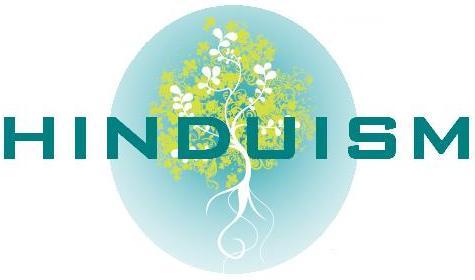 The controversy unleashed by Penguin’s decision to withdraw Professor Wendy Doniger’s book, The Hindus: An Alternative History, from circulation has confirmed India as a textbook example of illiberal democracy. It has also reminded us forcefully of the profound crisis that afflicts this country’s majority religion: the amnesia of significant numbers of Hindus towards their own complex and polychromatic history, their alienation from the experimental plurality and criticality that has distinguished Hindu thought at its best, and their militant adoption of austere templates from the same Abrahamic religions that many of them oppose and denigrate.
The controversy unleashed by Penguin’s decision to withdraw Professor Wendy Doniger’s book, The Hindus: An Alternative History, from circulation has confirmed India as a textbook example of illiberal democracy. It has also reminded us forcefully of the profound crisis that afflicts this country’s majority religion: the amnesia of significant numbers of Hindus towards their own complex and polychromatic history, their alienation from the experimental plurality and criticality that has distinguished Hindu thought at its best, and their militant adoption of austere templates from the same Abrahamic religions that many of them oppose and denigrate.
Professor Doniger’s detractors exemplify the triumph of the 19th-century European Orientalist interpretation of Hindu tradition. Worse, far from representing a pristine Hinduism restored from remote antiquity, organizations like the Shiksha Bachao Andolan have internalized — and embody — the alarm of a narrow colonial-era missionary Christianity confronted with the unpredictable richness of Hinduism’s philosophical, religious and aesthetic expressions. As products of the same colonial knowledge system they profess to despise, such defenders of Hinduism are the worst enemies of Hindu tradition.
Too often, those who claim the high ground of tradition perform a selective, exclusionary reading of the multiple pasts that we inherit, and fossilize a singular past to serve their ideological purposes. They would have us believe that tradition is a sealed archive of significant values, texts and perspectives. On the contrary, to keep tradition truly alive, we must stop regarding it as fossil fuel and treat it as the renewable resource it actually is. We must access its diverse, unpredictable, irreconcilable explorations, and read every version of every text it has preserved.
Hindu tradition especially prizes the art of reading against the grain and composing alternative accounts. The Ramayana and the Mahabharata, for example, were composed over many centuries by editors of divergent perspectives. They have given birth to multiple versions across the geographical expanse of South Asia and, as with the Ramayana, throughout South-east Asia. The epics do not privilege a single authorial voice, definitive account or interpretation of themselves. It is the reader who must enact, within herself, the dilemmas and predicaments they record, and arrive at a provisional conclusion. This is why the central Hindu concept of dharma eludes translation. It is a truth to be arrived at performatively, not a truth doctrinally specified in advance.
The first stage in the education of many of Doniger’s detractors was prepared by the Orientalist scholars during the late 18th and early 19th centuries, who dedicated themselves to the study of the Sanskrit language, and the Vedic, Upanishadic and Pauranic texts. Shaped by a monotheistic Protestant worldview, scholars like William Jones and HT Colebrooke were unsettled by the polycentric discursive universe they found. To make sense of it, they sought to isolate and emphasize what they identified as principal texts. Unsurprisingly, many of these articulated the monotheistic and monistic aspects of Hindu thought. Duly edited and annotated, these select works found their way beyond the Brahminical world of birchbark and palmleaf manuscripts into the far wider circulations of print modernity. By the following generation, these would serve as foundational charters for Hindu reformists intent on producing a monotheistic or monist Hinduism that could confront the Empire’s religion, an increasingly Victorian Christianity, on its own terms.
It is possible to read this period of Hindu ‘reform’ as, in fact, a period of intense Hindu self-suspicion and selfloathing. Every element of Hindu practice that might invite the colonial missionary’s scorn was disowned. Tantra, whose belief in the transcendence of the perceived oppositions of high and low, mind and body, male and female continues to inform Hindu ritual practice in seminal ways, was stigmatized as a sign of historical degeneration. Every reference to bodily and erotic experience was explained away as mere symbolism for spiritual experience. This puritan and monolithic notion of Hinduism has established itself as an unquestionable reality in the imagination of many contemporary Hindus.
By according primacy to Advaita, it has marginalized such vigorous non-Advaita lineages as Kashmir Shaivism, Pancharatra Vaishnavism and Vishishtadvaita. By proclaiming tradition to be a sealed archive, it has also left many Hindus ignorant of the robust confidence of the unfolding Hindu tradition, as exemplified by thinkers like Daya Krishna, Ramchandra Gandhi and M P Rege.
Dayaji’s critical edition of the Rig Veda resulted in his discovery of 30 rishikas, female rishis, among the authors of the first Veda. Ramubhai’s insistence on the plenitude of Sita’s kitchen, Sita ki rasoi, in Ayodhya’s ruins, and his resolute rejection of the thesis that the Omnipresent can be confined to a particular birthplace, is a courageous stand against Hindutva dogma. Professor Rege’s preoccupation with a samanya dharma that affirms ethical practice over belief points beyond the identitarian politics of Hindutva. Above all, these thinkers recall us to that key characteristic of Hindu thought through the centuries: tarka, debate, argument, a dialectical openness to the possibility that we can discuss our way through our differences.





